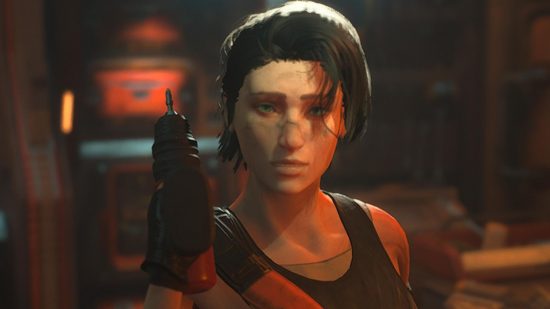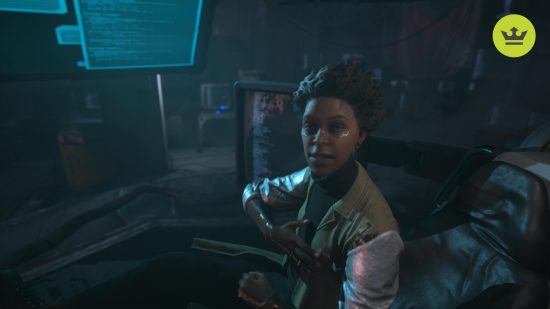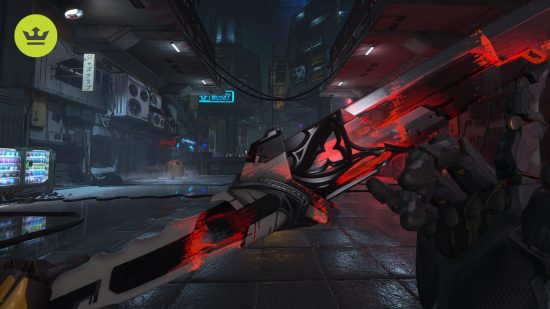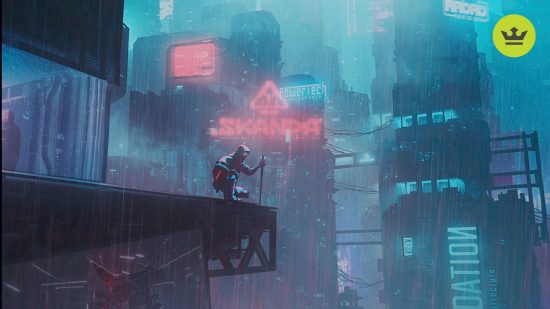Our Verdict
Ghostrunner 2 sets out to improve on the fast-paced foundation of the first game with a few new ideas thrown in as well. While some of these ideas are intriguing and support some of the game's best setpieces, the overall experience is constantly bogged down by frustrating decisions made along the way. Instead of offering a greater challenge than its predecessor, the end result feels annoying for annoyance's sake, compromising what made Ghostrunner stand out in the first place.
Ghostrunner was heavily inspired by Hotline Miami. For better and worse, the sequel shares a similar path with its influences. It kicks off from a solid foundation, and gradually begins tinkering with different ideas to ramp up the challenge – even if it means compromising already existing greatness along the way. After the 10 hours that it took to see the end credits, working on my Ghostrunner 2 review left me conflicted about the purpose of the sequel altogether.
Throughout the first few levels, there’s little innovation at play. This isn’t a bad thing considering it’s been a few years since the release of the first Ghostrunner, and recovering that muscle memory takes more than a handful of retries. When it comes to fast-paced games where death is instant, the first entry remains unmatched in multiple ways, and the sequel reminds you of that. Respawning is as snappy as ever, while combat arenas are still as predominant as platforming sections, with open areas often mixing the two.
If you want to stay alive for more than a few seconds, it’s imperative that you learn (or re-learn) the basics, and make use of them at all times. In particular, how each platforming element works. Over time, Ghostrunner 2 introduces new elements for you to take into consideration during your multitasking murder plans. Boxes to push using the area blast of the Tempest ability to open paths, sewer sections where you need to slow down spinning fans on time while throwing a shuriken at the right moment to also disable an electric trap, and dozens upon dozens of close jumps after a wall run. If these scenarios sound familiar, it’s because they largely are. The exceptions, which converge some of the areas of improvement of the sequel, take quite some time to appear. But they all start with the story.

Ghostrunner 2 takes place a year after the events of the first game. If you don’t recall what transpired, don’t fret, as there’s a series of beautifully drawn cutscenes to get you up to speed. Right off the bat, dialogue is far more prevalent, with multiple characters chiming into your comms to chat about the current mission or bicker with one another. This tends to take place during platforming sections, so your carnage is rarely interrupted. By and large, conversations are trope-y and on par with the cyberpunk setting, but there’s some standout voice acting across the board. Two characters in particular were a highlight in terms of personality — which is unfortunate, since they both die shortly after you meet them.
It’s easy to assume the developers didn’t want to place the story into the spotlight, and there are two interesting methods that help with this. Whenever you’re listening to dialogue and you die mid-sentence, the conversation backtracks just slightly. It not only works as a gentle catchup, but you’re not forced to listen to the entire conversation from scratch. Then, returning from levels occasionally takes you back into a hub where you can chat with the characters in person. Don’t expect a complex dialogue system at display here — you’re mostly learning new bits of information or some background details. But, if you’re not interested, you can just talk to the highlighted person and jump straight into the next level, no questions asked.
Bosses, in particular, make an interesting use of dialogue. You’re likely to respawn multiple times, something that is acknowledged by foes having different dialogue lines when you do. It doesn’t last forever, and you’re bound to hear a few repetitions eventually. But it’s a nice touch that helps to prevent adding annoying monotony during tough encounters, while also keeping the heat of the moment alive.
Speaking of which, boss fights offer the strongest setpieces of Ghostrunner 2. It’s a mix of a classic one-on-one duel with specific platforming-based segments that you need to learn on the go. One boss in particular presents itself as an impenetrable fortress chasing you down, until you eventually end up face-to-face against its weakpoints as you’re riding the motorcycle, which is part of the main additions of the sequel. It’s a fast-paced section that, at first, left me in awe, and brought up excitement over what the studio’s previous knowledge and newer tech were able to accomplish. Yet, many of the standout elements that I’ve mentioned all suffer from a series of design frustrations.
This is in part due to some mischievous enemy placement that is unnecessarily unfair at times, and platforming sections that seem unable to keep up with the breakneck speed of your moveset. Enemies carrying fire weapons are more common in the sequel, and they all have perfect aim. The best strategy always ends up memorizing where they are and the combination of movements you need to avoid the impact of multiple foes at once. The problem is, especially in larger arenas, that there are too many enemies to keep track of.
You might be tackling three different enemy types on a platform on the left, and suddenly be obliterated by a shockwave or laser from across the entire area. Much like Hotline Miami 2, frustration comes when you can’t see where projectiles are coming from in the first place. There are tools to make use of in order to come up with a plan ahead of time, but playing Ghostrunner 2, the last thing I wanted to do was stand still. You won’t really know the rhythm you need to maintain, or the best route to take down the more annoying enemies, until you jump into the fray and die a dozen times.
Sure, it’s the expected loop. But even toward the end where there’s more movement variety and abilities at your disposal, I can’t help but feel that the core idea of the first game hasn’t become more challenging, but more cumbersome to navigate – it’s rare to feel good about a well-executed plan. Finishing a combat arena didn’t give me a satisfactory feeling or make me buy into the cool factor. Instead, I was relieved that I didn’t have to continue repeating the same section yet again. Moving around feels refined, but it’s drawn back with awkward mantling or jumps that can cancel certain actions, to name a few general examples, and avoid listing a plethora of moments that made me shake my head in exhaustion.
In terms of ideas, Ghostrunner 2 feels more like an encore than a full-blown sequel. The story, while serviceable, never manages to surprise. Standout setpieces are far and few between, and additions like the motorcycle (and a later item that helps with making platforming less annoying) are frustratingly integrated – they are both introduced a little too late and leave a little too soon to make a lasting impact.
It’s clear that the sequel understands what made its predecessor so compelling – for the most part, you’re playing an extension of it without much of a breakthrough. But its frenetic essence constantly clashes with everything around you. With how excellent the first game felt to play, I was hoping that this would still emerge as one of the best PS5 games in an already busy year for. However, for an experience that encourages you to act fast and don’t stop moving, you’re constantly being slowed down for all the wrong reasons.



